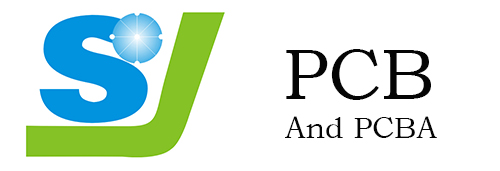Welding
Appearance features: There is an obvious black border between the solder and the component lead or copper foil, and the solder is sunken toward the border.
Hazard: Cannot work properly.
Cause Analysis:
Component leads are not cleaned, not tinned or oxidized.
The printed board is not cleaned well, and the quality of the sprayed flux is not good.
Solder buildup
Appearance features: loose solder joint structure, white, dull.
Cause Analysis:
The solder quality is not good.
Soldering temperature is not enough.
When the solder is not solidified, the component leads are loose.
Too much solder
Appearance features: The solder surface is convex.
Hazard: Wastes solder and may harbor defects.
Cause analysis: The solder was removed too late.
Too little solder
Appearance features: The welding area is less than 80% of the pad, and the solder does not form a smooth transition surface.
Hazard: Insufficient mechanical strength.
Cause Analysis:
Poor solder flow or premature solder withdrawal.
Insufficient flux.
Soldering time is too short.
Rosin welding
Appearance features: Rosin slag is sandwiched in the weld.
Hazard: Insufficient strength, poor conduction, may be on and off sometimes.
Cause Analysis:
Too many welde or have failed.
Insufficient welding time and insufficient heating.
The oxide film on the surface is not removed.
overheat
Appearance features: white solder joints, no metallic luster, rough surface.
Hazard: The pad is easy to peel off and the strength is reduced.
Cause analysis: The power of the soldering iron is too large, and the heating time is too long.
PCBA Common Soldering Defects
cold welding
Appearance features: the surface is like bean curd residue, and sometimes there may be cracks.
Hazard: low strength, poor electrical conductivity.
Cause analysis: There is vibration before the solder is solidified.
poor infiltration
Appearance features: The contact between the solder and the weldment is too large and not smooth.
Hazard: low intensity, blocked or disconnected from time to time.
Cause Analysis:
The weldments are not clean.
Insufficient or poor quality flux.
The weldment is not heated sufficiently.
asymmetrical
Appearance features: The solder does not flow to the pad.
Hazard: Insufficient strength.
Cause Analysis:
Solder flow is not good.
Insufficient or poor quality flux.
Insufficient heating.
loose
Appearance features: wires or component leads can be moved.
Hazard: Poor conduction or non-conduction.
Cause Analysis:
Lead movement before the solder has solidified creates voids. Poor lead wire preparation (poor or no wetting).
Pull the tip
Appearance features: appear sharp.
Harm: Poor appearance, easy to cause bridging phenomenon.
Cause Analysis:
Too little flux and heating time is too long.
Improper withdrawal angle of the soldering iron.
bridging
Appearance features: adjacent wire connection.
Hazard: Electrical short circuit.
Cause Analysis:
Too much solder.
Improper withdrawal angle of the soldering iron.
pinhole
Appearance features: Visual inspection or low power magnification can be seen with holes. Harm: Insufficient strength, easy to corrode solder joints.
Cause analysis: The gap between the lead wire and the pad hole is too large. PCBA Common Soldering Defects
copper foil lift
Appearance features: The copper foil is peeled off from the printed board.
HAZARD: Printed board is damaged.
Cause analysis: The welding time is too long and the temperature is too high.
peel off
Appearance features: The solder joints are peeled off from the copper foil (not the copper foil and the printed board).
Hazard: open circuit.
Cause analysis: The metal plating on the pad is poor.
The above is about the common soldering defects, appearance characteristics, hazards and cause analysis of PCBA. I hope this article can provide you with some help! Bubbles



